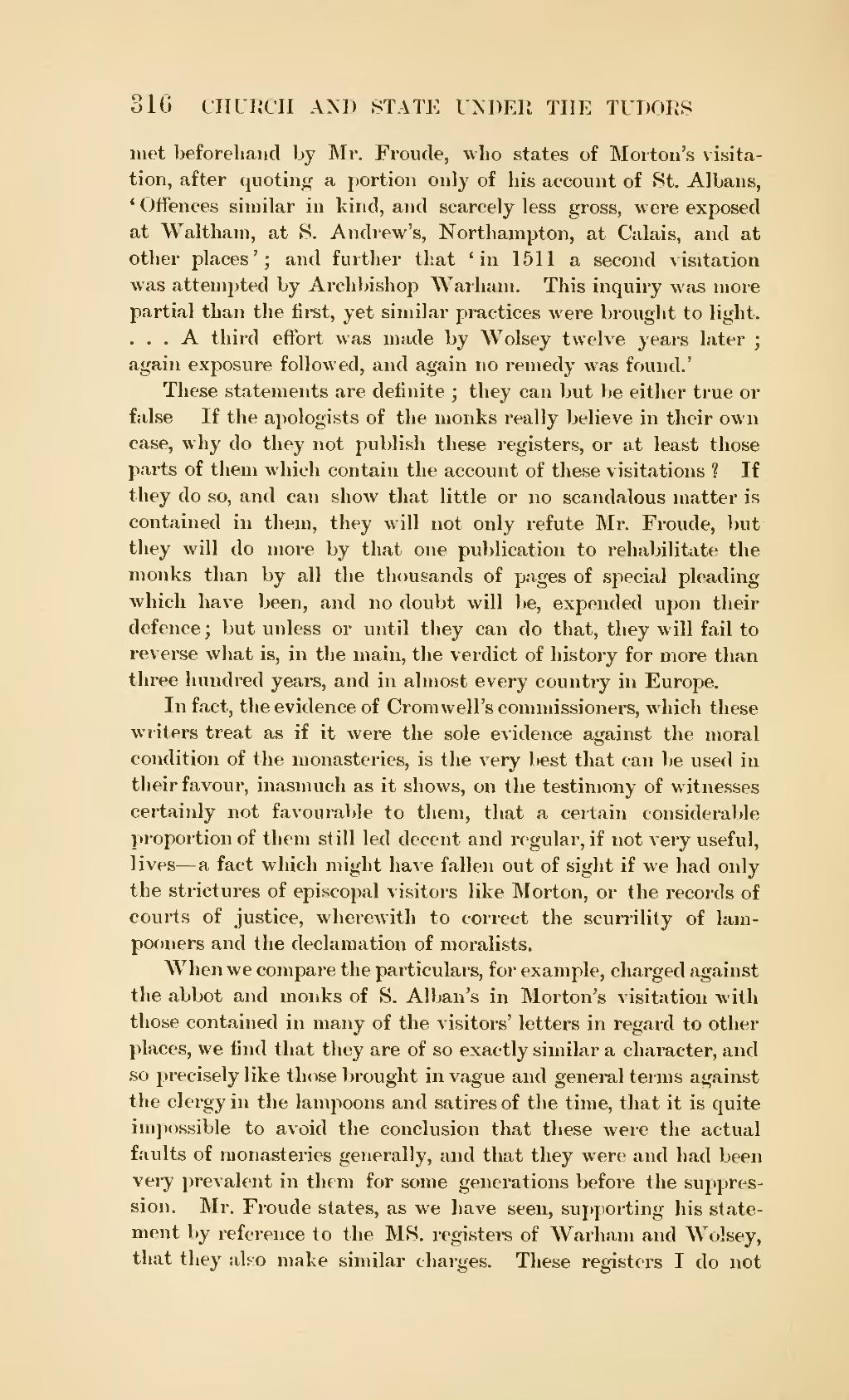met beforehand by Mr. Froude, who states of Morton's visitation, after quoting a portion only of his account of St. Albans, ' Offences similar in kind, and scarcely less gross, were exposed at Waltham, at S. Andrew's, Northampton, at Calais, and at other places'; and further that 'in 1511 a second visitation was attempted by Archbishop Warham. This inquiry was more partial than the first, yet similar practices were brought to light. … A third effort was made by Wolsey twelve years later; again exposure followed, and again no remedy was found.'
These statements are definite; they can but be either true or false If the apologists of the monks really believe in their own case, why do they not publish these registers, or at least those parts of them which contain the account of these visitations? If they do so, and can show that little or no scandalous matter is contained in them, they will not only refute Mr. Froude, but they will do more by that one publication to rehabilitate the monks than by all the thousands of pages of special pleading which have been, and no doubt will be, expended upon their defence; but unless or until they can do that, they will fail to reverse what is, in the main, the verdict of history for more than three hundred years, and in almost every country in Europe.
In fact, the evidence of Cromwell's commissioners, which these writers treat as if it were the sole evidence against the moral condition of the monasteries, is the very best that can be used in their favour, inasmuch as it shows, on the testimony of witnesses certainly not favourable to them, that a certain considerable proportion of them still led decent and regular, if not very useful, lives—a fact which might have fallen out of sight if we had only the strictures of episcopal visitors like Morton, or the records of courts of justice, wherewith to correct the scurrility of lampooners and the declamation of moralists.
When we compare the particulars, for example, charged against the abbot and monks of S. Alban's in Morton's visitation with those contained in many of the visitors' letters in regard to other places, we find that they are of so exactly similar a character, and so precisely like those brought in vague and general terms against the clergy in the lampoons and satires of the time, that it is quite impossible to avoid the conclusion that these were the actual faults of monasteries generally, and that they were and had been very prevalent in them for some generations before the suppression. Mr. Froude states, as we have seen, supporting his statement by reference to the MS. registers of Warham and Wolsey, that they also make similar charges. These registers I do not
